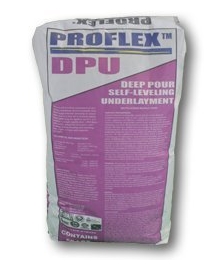Tile Over Bad Concrete

You can see the top layer of the concrete stuck to the bottom of the tile. This just adds another step to the process. Photo credit: Eric Sokolowski
Eric M. Sokolowski and his wife, I think, have trouble in Tukwila, Washington.
They have to tile over bad concrete and are stuck on what to do.
Here's Eric's full report:
"Hi Tim,
We want to replace the kitchen/foyer tile in our 1993 condo. We already knew the subfloor was some type of soft concrete that we are unfamiliar with we did a test removal of a tile under the oven.
What we discovered was disturbing. The subfloor appears to be breaking apart and comes off along with the thinset and tile.
We are wondering what the prospects are for being able to remove and replace the outdated ceramic tile or what workarounds may we consider in completing this project."
You knew I'd have an answer, right? I always do. 🙂
Eric, you'll be able to install new tile.
The first thing to do is to check the integrity of the concrete after you remove the tile. Just take a hammer and a cold chisel and see if the rest of the concrete that's in place is sound.
I don't want you to beat on the slab, you just want to see if you can remove more concrete with minimal effort. If so, you need to remove any and all rotten concrete.
Once you have this done, you've got two options.
Install a thin layer of self-leveling floor material like this one from Proflex.
Install a thin sand/cement overlay. CLICK HERE to read several of my past columns about concrete overlays and how to do them.
I can tell you I'd opt for the self-leveling underlayment because they work and they're so much easier to do than a thin overlay. Since you're working with tile as the finished floor, it's imperative you get the floor in the same plane and that's hard for a rookie to do with a thin concrete or sand/cement overlay.
When you get the sacks of the pourable self-leveling material, TEST it first in a small area. You need to understand how to work with the material to get it to flow. Be sure the bad concrete is dust-free and it may be a good idea - assuming the underlayment instructions permit it - to dampen the old concrete. The damp concrete may help increase the bond.
The water could also create problems! So READ the instructions carefully.
